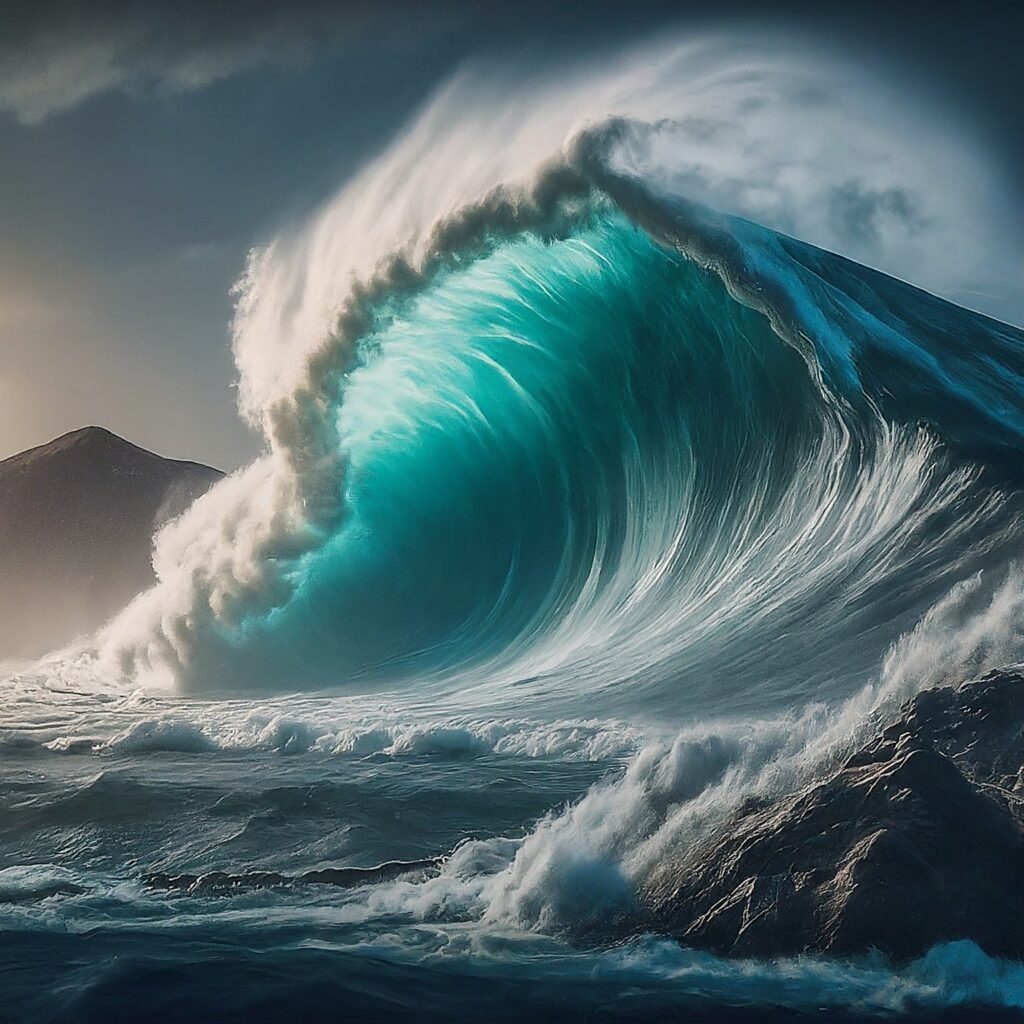A tsunami is a series of ocean waves with extremely long wavelengths that are generated by a sudden disturbance in the ocean. This disturbance can be caused by a variety of sources, like earthquakes, volcanic eruptions, and underwater landslides. Tsunamis can travel across the ocean and cause significant damage and destruction when they reach the coast.

Table of Contents
Formation of Tsunamis
They are formed when there is a sudden disturbance in the ocean, such as an earthquake, volcanic eruption, or underwater landslide. This disturbance creates a series of ocean waves with extremely long wavelengths that can travel across the ocean at speeds of up to 700 km/h. When the tsunami reaches the coast, the waves can increase in height and cause significant damage and destruction.
"Tsunami have long wavelengths, it can extend up to hundreds of kilometers in the open ocean. "
Types of Tsunami
Seismic Tsunamis
Seismic tsunamis are tsunamis that are caused by earthquakes. They are the most common type of tsunami and are often generated by earthquakes that occur near the coast or on the ocean floor.
Volcanic Tsunamis
Volcanic tsunamis are tsunamis that are caused by volcanic eruptions. They can be generated by the collapse of a volcanic island or by the eruption of a submarine volcano.
Landslide Tsunami
Landslide tsunamis are tsunamis that are caused by underwater landslides. They can be generated by the failure of a submarine slope or by the collapse of a coastal cliff.
Wave Characteristics
Tsunami waves differ from regular ocean waves in several ways. They typically have long wavelengths (the distance between wave crests), which can extend hundreds of kilometers in the open ocean. While tsunami waves may not be particularly tall in deep water, they can travel at high speeds, often reaching speeds of several hundred kilometers per hour. As tsunamis approach shallow coastal areas, their long wavelengths cause the wave heights to increase dramatically, leading to the destructive flooding associated with tsunamis.
The Effects of Tsunami
Tsunamis can have a significant impact on the environment and human populations, including the destruction of buildings and infrastructure, the displacement of populations, and even fatalities. In addition, tsunamis can also trigger secondary hazards, such as fires and flooding.
Preventing Tsunamis
There is no way to prevent tsunamis from occurring, but there are steps that can be taken to minimize their impact on human populations and infrastructure. These steps include the implementation of early warning systems, the creation of evacuation plans, and the construction of tsunami-resistant buildings.
Read: Geography